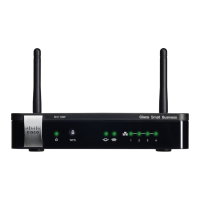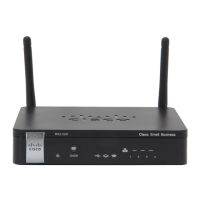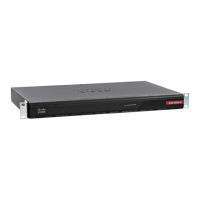Configuring the Wireless Network
Configuring Basic Wireless Settings
Cisco RV120W Administration Guide 55
3
signal components above the carrier frequency constitute the upper sideband
(USB) and those below the carrier frequency constitute the lower sideband (LSB).
STEP 6 The channel field specifies the frequency that the radio uses to transmit wireless
frames. Select a channel from the list of channels or choose auto to let the Cisco
RV120W determine the best channel to use based on the environment noise levels
for the available channels.
STEP 7 In the U-APSD field, choose Enable to enable the Unscheduled Automatic Power
Save Delivery (also referred to as WMM Power Save) feature that allows the radio
to conserve power. This feature is disabled by default.
STEP 8 Click Save.
Configuring Wireless Security and Other Settings
At a minimum, you should edit the default profiles to enable wireless security. See
A Note About Wireless Security, page 51.
You can configure wireless security and other settings for each wireless network.
To configure wireless settings:
STEP 1 Choose Wireless > Basic Settings.
STEP 2 In the Wireless Basic Settings Table, check the box on the left of the wireless
network you want to configure.
STEP 3 Click Edit to configure these network properties:
a. Enter the SSID name, or the unique name for this wireless network. Include up
to 32 characters, using any of the characters on the keyboard. For added
security, you should change the default value to a unique name.
b. Check the Broadcast SSID box if you want to allow all wireless clients within
range to be able to detect this wireless network when they are scanning the
local area for available networks. Disable this feature if you do not want to make
the SSID known. When this feature is disabled, wireless users can connect to
your wireless network only if they know the SSID (and provide the required
security credentials).
c. Enter the VLAN, or network for this wireless network. (See Chapter 2,
Configuring Networking, for more information on VLANs.) Devices connecting
to this network are assigned addresses on this VLAN. The default VLAN is 1
and if all the devices are on the same network, this can be left unchanged.
